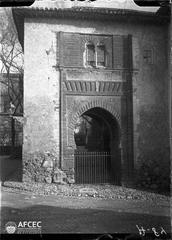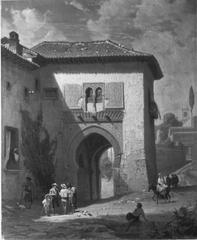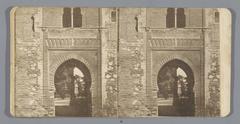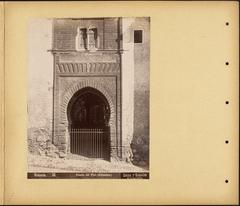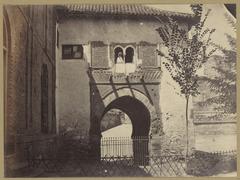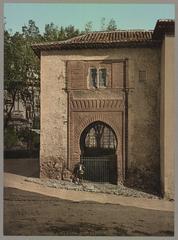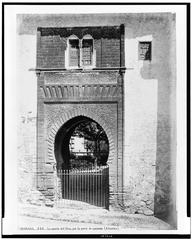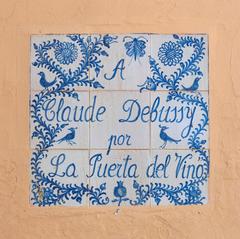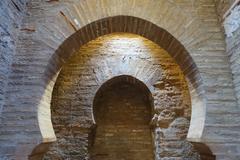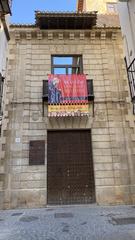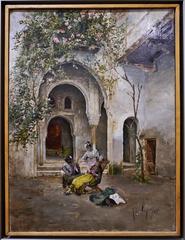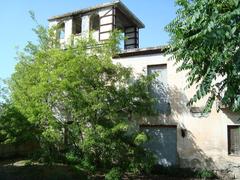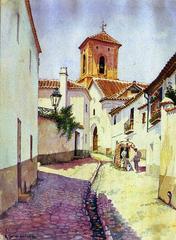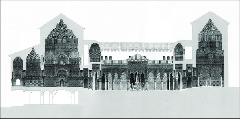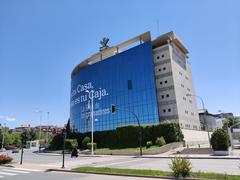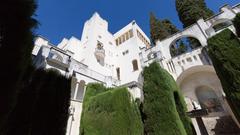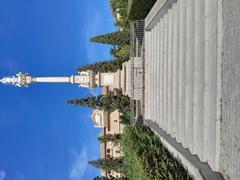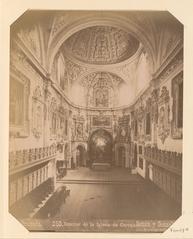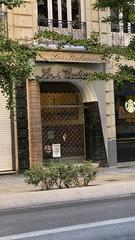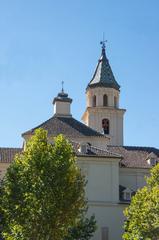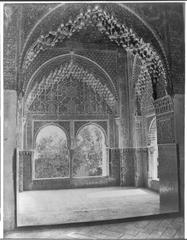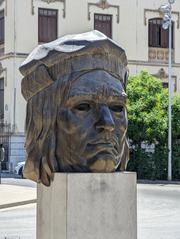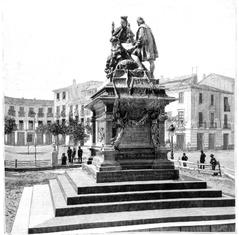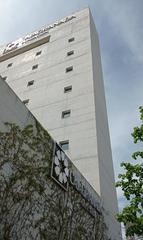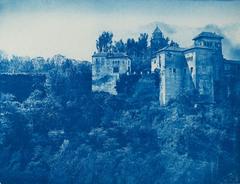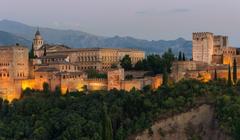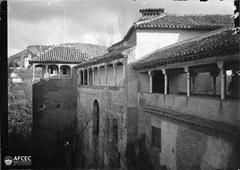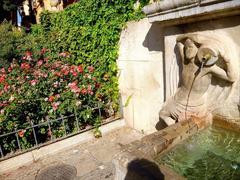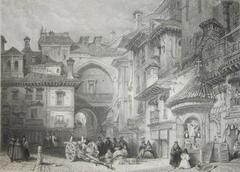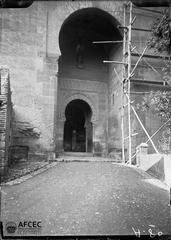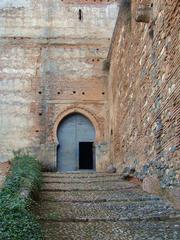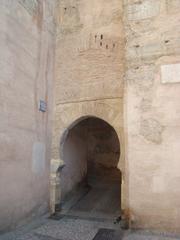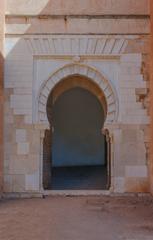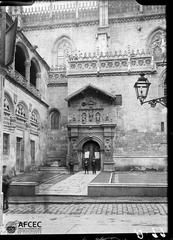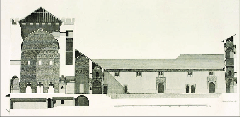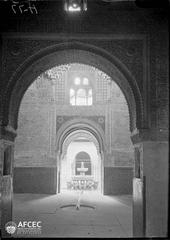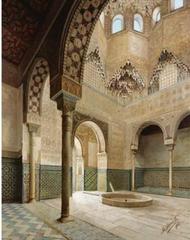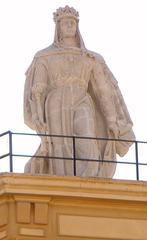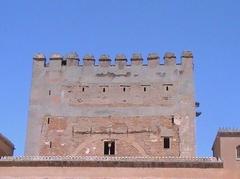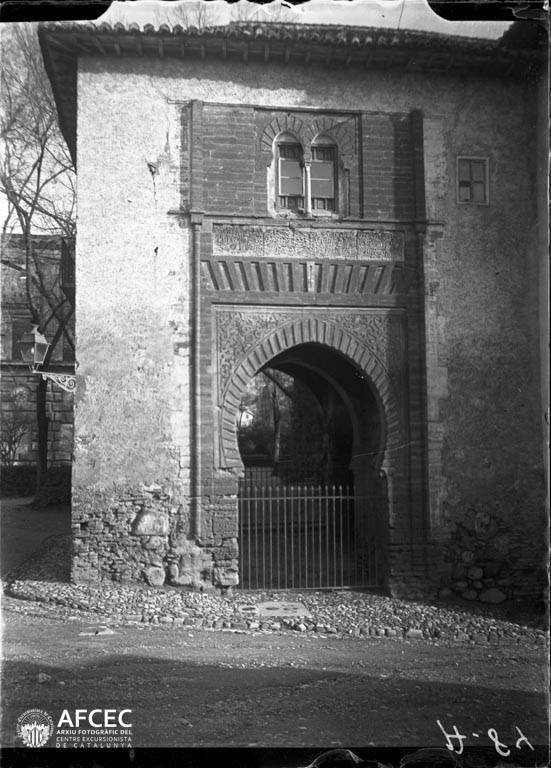
Puerta del Vino Granada: Visiting Hours, Tickets, and Historical Sites Guide
Date: 14/06/2025
Introduction
Nestled within the renowned Alhambra complex in Granada, Spain, the Puerta del Vino (“Wine Gate”) is a striking example of Nasrid architecture and a testament to the region’s layered cultural history. With its distinctive horseshoe arch, intricate stucco decoration, and evocative Arabic inscriptions, the gate offers visitors a window into the artistic synthesis that defines the Alhambra. Beyond its architectural beauty, the Puerta del Vino is steeped in legend and folklore, serving both as an emblem of Granada’s Moorish past and an inspiration for artists and travelers around the world. This guide provides a comprehensive overview of the Puerta del Vino, including detailed visiting information, architectural highlights, travel tips, and its significance within Granada’s historical landscape. For official planning resources, consult the Alhambra website, Earth Trekkers, and Andalucia.com.
Contents
- Historical Background
- Origins, Etymology, and Legends
- Architectural Features and Artistic Significance
- Visiting Information
- Hours and Ticketing
- Accessibility and Facilities
- How to Get There
- Nearby Attractions and Travel Tips
- Cultural and Folkloric Importance
- Frequently Asked Questions (FAQ)
- Conclusion and Recommendations
- Sources
Historical Background
Origins, Etymology, and Legends
The Puerta del Vino’s name has puzzled historians for centuries. While “Wine Gate” is the literal Spanish translation, several theories exist regarding its origin. One common view is that the name resulted from a mistranslation of the original Arabic, possibly from “Bib al-Hamra” (Red Gate) or “Bib al-Jamra” (Wine Gate), with later Christian-era usage linking it to a local wine market or the tax-free delivery of wine to Alhambra residents after 1492 (explorial.com). Regardless of its true etymology, the gate has become a central figure in Granada’s folklore, with legends of rain rituals and mystical traditions further enhancing its enigmatic aura (explorial.com).
Originally constructed in the 14th century under the Nasrid dynasty—likely during the reigns of Muhammad III or Yusuf I—the Puerta del Vino functioned as an internal gateway. Unlike the defensive outer gates, its straight-line design facilitated movement between the Alcazaba (military area), the Calle Real Alta, the Medina (urban heart), and the Mezquita Mayor (Great Mosque) (granadaonly.com). Its position reflected sophisticated urban planning, separating administrative and residential quarters from religious spaces.
Architectural Features and Artistic Significance
The Puerta del Vino exemplifies Nasrid architectural style:
- Structure: A modestly sized, rectangular gatehouse of two floors—passageway below and former residential/administrative space above.
- Materials: Constructed from brick and stone, characteristic of Nasrid-era craftsmanship.
- Main Arch: The prominent horseshoe arch, framed by an alfiz (rectangular molding), is adorned with detailed stucco work, geometric motifs, and Kufic Arabic inscriptions—some quoting Quranic verses and others praising the Nasrid rulers (Alhambra Official Site).
- Decoration: Intricate vegetal (ataurique) and geometric designs, stylized floral spandrels, and polychrome remnants in red, blue, and gold. The lower façade features glazed ceramic tiles (azulejos) in complex patterns.
- Upper Floor: Twin horseshoe-arched windows separated by a slender marble column, framed with delicate latticework (sebka) that plays with light and shadow.
- Symbolism: The gate’s motifs embody Islamic artistic conventions, avoiding figurative imagery in favor of calligraphic and abstract decoration. This design influenced later Mudéjar architecture in Spain and inspired European Romantic and Orientalist artists.
Restoration efforts in the 20th century, notably by Leopoldo Torres Balbás, have preserved the gate’s structure and original polychromy (explorial.com).
Visiting Information
Hours and Ticketing
- Opening Hours: The Alhambra complex, including Puerta del Vino, is typically open:
- Spring/Summer (April–October): 8:30 AM – 8:00 PM
- Autumn/Winter (November–March): 8:30 AM – 6:00 PM
- Always verify current hours on the official website.
- Tickets:
- General Admission: ~€14–€18, includes Puerta del Vino and other Alhambra highlights.
- Reduced Rates: Available for students, seniors, and people with disabilities.
- Free Access: Puerta del Vino and the Palace of Charles V are accessible without a ticket; however, access to the Nasrid Palaces and Generalife requires advance booking (Andalucia.com). Residents of Granada may enter free on Sundays with prior reservation.
- ID Requirement: Bring the same ID or passport used to purchase your ticket (The Viva La Vita).
- Granada Card: Combines Alhambra admission with other city attractions and public transport (Road Affair).
Accessibility and Facilities
- Accessibility: The Alhambra and Puerta del Vino offer wheelchair access via ramps and smooth paths, but certain areas have cobblestones and uneven terrain (Andalucia.com). Reduced tickets are available for visitors with disabilities; children under 12 enter free with a ticket.
- Facilities:
- Restrooms: Located near the Access Pavilion, Puerta del Vino, and Generalife gardens (Earth Trekkers).
- Lockers/Stroller Storage: Available at Puerta del Vino; strollers not permitted inside buildings.
- Shops & Cafés: Souvenir shops, wine and cheese vendors, and cafés are nearby for refreshments (Thrillophilia).
How to Get There
- On Foot: Scenic uphill walk (20–30 minutes from city center via Plaza Nueva).
- Bus: City buses C30 and C32 connect central Granada to the Alhambra entrance.
- Taxi: Readily available.
- Car: Parking at Alhambra car parks (daily max ~€18) (Andalucia.com).
- Inside Alhambra: Follow signs to Puerta del Vino, located between the Alcazaba and Plaza de los Aljibes.
Nearby Attractions and Travel Tips
- Alcazaba: The oldest section of the Alhambra, offering panoramic city views (Earth Trekkers).
- Palace of Charles V: Renaissance structure adjacent to Puerta del Vino, housing museums with free entry.
- Generalife Gardens: Famed Moorish landscaping and tranquil ambience.
- Plaza de los Aljibes: Adjacent square with historic cisterns and spectacular vistas.
Travel Tips:
- Book tickets well in advance, especially for Nasrid Palaces (Cultured Voyages).
- Arrive early (by 8:00 am) to avoid crowds and enjoy ideal photography lighting.
- Wear comfortable shoes; bring water and sun protection.
- Plan your route, as re-entry may not be allowed after leaving.
- Guided tours and audio guides available in multiple languages (Road Affair).
Cultural and Folkloric Importance
Puerta del Vino’s significance extends beyond architecture. As a marker between military, residential, and religious spheres, it embodies the sophisticated social order of Nasrid Granada. Local legends tell of drought rituals performed at the gate, and its mystical reputation continues in contemporary folklore (explorial.com). Its evocative image inspired Debussy’s piano prelude “La Puerta del Vino,” highlighting its global artistic influence (christopher-weeks.com).
Restoration in the 20th century preserved its original colors and decorative elements, ensuring the gate remains a living symbol of Granada’s multicultural legacy (granadaonly.com).
Today, the Puerta del Vino’s panoramic location and open access make it a focal point for both locals and travelers, integrating seamlessly into Granada’s vibrant cultural life (en.granada.info).
Frequently Asked Questions (FAQ)
Q: What are Puerta del Vino’s visiting hours?
A: Generally, 8:30 AM–6:00 PM in winter, 8:30 AM–8:00 PM in summer. Confirm on the official website.
Q: Is Puerta del Vino free to visit?
A: Yes, the gate itself is accessible without an Alhambra ticket; however, access to other areas of the complex requires a ticket (Andalucia.com).
Q: Are guided tours available?
A: Yes, tours and audio guides are available for deeper historical context (Cultured Voyages).
Q: Is Puerta del Vino wheelchair accessible?
A: Most areas are accessible, though some terrain is uneven. Assistance is available; check details before visiting.
Q: Can I take photos at Puerta del Vino?
A: Photography is permitted, but avoid touching the stonework out of respect for the monument.
Conclusion and Recommendations
The Puerta del Vino remains a highlight of Granada’s historical and cultural landscape—a gateway not only between spaces but between eras and traditions. Blending Nasrid architectural brilliance, vibrant legends, and contemporary accessibility, it invites visitors to explore the heart of Andalusia’s Islamic heritage. For a rewarding visit, book tickets in advance, arrive early, and consider a guided tour to enrich your understanding.
Enhance your experience by downloading the Audiala app for guided tours, travel tips, and interactive maps. Stay connected on social media for real-time updates and further insights into Granada’s treasures.
Alt text: The ornate horseshoe arches of Puerta del Vino at the Alhambra in Granada, Spain.
View Map of Alhambra and Puerta del Vino
Related Articles
Sources
- alhambra-patronato.es
- explorial.com
- andalucia.com
- earthtrekkers.com
- culturedvoyages.com
- christopher-weeks.com
- granadaonly.com
- en.granada.info
- thevivalavita.com
- roadaffair.com
- thrillophilia.com
